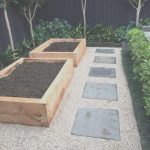Many individuals turn to pressure treated wood for its durability and resistance to decay, making it a popular choice for various outdoor projects. However, when it comes to using pressure treated wood in vegetable gardens, concerns arise about the potential risks and safety. This introductory section aims to provide an overview of pressure treated wood and delve into the potential dangers it may pose to vegetables and ultimately human health.
Pressure treated wood is created by infusing chemicals into the wood under high pressure and vacuum conditions. This process helps prevent rot, decay, and insect damage, ensuring the longevity of wooden structures. In vegetable gardens, pressure treated wood is commonly used for raised beds, garden borders, or even as support structures for climbing plants. While its benefits are evident in terms of longevity, there are lingering concerns regarding chemical leaching from the wood into the surrounding soil.
The potential risk lies in the chemicals used during the pressure treating process. In the past, chromated copper arsenate (CCA) was a commonly used preservative that contained toxic chemicals like arsenic. Over time, research revealed that these chemicals could potentially leach into nearby soil and be absorbed by plants growing in close proximity.
Consequently, safety regulations were implemented to reduce exposure to harmful substances and protect consumers’ health. It is important for gardeners to understand these risks before deciding whether or not to use pressure treated wood in their vegetable gardens.
As we explore further in this article, we will delve into the history of pressure treated wood and examine the safety regulations currently in place. Additionally, we will dive into different types of pressure treated wood available on the market today and their associated risks.
Furthermore, we will discuss alternative options for those who prefer not to use pressure treated wood but still desire a long-lasting wooden structure within their vegetable gardens. By providing readers with comprehensive information concerning the use of pressure treated wood in vegetable gardens, they can make an informed decision that prioritizes both the health of their plants and their own well-being.
The history of pressure treated wood and its safety regulations
The history of pressure treated wood can be traced back to the early 20th century, when it was first introduced as a solution to protect wood from decay and insect damage. The process of pressure treating involves forcing chemical preservatives into the wood fibers under high pressure, creating a barrier against rot and pests. This innovation revolutionized the construction industry and made it possible to build structures that would last longer.
However, concerns about the safety of pressure treated wood arose due to the use of certain chemicals in the preservation process. Until the mid-2000s, one commonly used chemical in pressure treated wood was chromated copper arsenate (CCA), which contained arsenic, chromium, and copper. These chemicals were effective at preventing decay and insect infestations but raised environmental and health concerns.
In response to these concerns, safety regulations were put in place to protect consumers using pressure treated wood. In 2004, CCA-treated wood was voluntarily phased out for residential uses in the United States due to fears of arsenic leaching into the soil.
The use of alternative preservatives, such as alkaline copper quaternary (ACQ) or copper azole (CA), became more widespread. These new treatments are considered safer than CCA-treated wood because they do not contain arsenic or other heavy metals.
Today, safety regulations require manufacturers to label pressure treated wood products with information about their preservative ingredients and any precautions that should be taken during handling and installation. It is important for gardeners considering using pressure treated wood in their vegetable gardens to be aware of these regulations and choose materials that comply with current safety standards.
By understanding the history of pressure treated wood and its safety regulations, gardeners can make informed decisions about whether or not to use this material in their gardens.
The different types of pressure treated wood available
When considering the use of pressure treated wood in vegetable gardens, it is important to understand the different types of pressure treated wood available on the market. Pressure treated wood is categorized based on the type of chemicals used in its treatment process. Here are some commonly used chemicals in pressure treated wood:
- CCA (Chromated Copper Arsenate): This was once a widely used chemical for treating wood, but it is now banned for residential use due to concerns about its potential health risks.
- ACQ (Alkaline Copper Quaternary): ACQ-treated wood has become a popular alternative to CCA-treated wood. It uses copper combined with a quaternary compound as the primary chemical preservative. ACQ-treated wood is considered safe for vegetable gardens.
- Copper Boron Azole (CBA) and Micronized Copper Azole (MCA): These two types of treatments are recognized as low-toxicity alternatives to CCA-treated wood. They contain copper and boron or copper and fungicide, respectively.
It is essential for gardeners to identify the type of pressure treated wood they are using or considering using in their vegetable gardens. This information can typically be found on labels or provided by the supplier. By knowing which chemical is used in the treatment process, gardeners can make informed decisions about whether or not they are comfortable using that specific type of pressure treated wood.
In addition to understanding the various chemicals used in pressure treated wood, it’s also crucial to be aware of other factors such as retention levels and end-cut treatments. Retention level refers to the amount of preservative that remains within the wood after treatment, while end-cut treatments involve applying additional preservatives to exposed ends of cut lumber.
Familiarizing yourself with these details will help ensure that you are selecting the right type of pressure treated wood for your vegetable garden.
The risks associated with using pressure treated wood in vegetable gardens
Potential health risks of chemical leaching
One of the major concerns when using pressure treated wood in vegetable gardens is the potential for chemicals to leach into the soil. Pressure treated wood is treated with chemicals such as chromated copper arsenate (CCA), which contains arsenic, copper, and chromium. These chemicals can gradually seep into the soil over time and may be absorbed by the vegetables that are grown in it.
Exposure to these chemicals can pose health risks to both humans and animals. Arsenic, for example, is a known carcinogen and can also cause various neurological effects. Copper and chromium can also have harmful effects on human health when present at high levels. It is important to note that the risk of chemical leaching decreases over time as the wood weathers and breaks down, but it is still crucial to understand and minimize these potential risks.
Effects on human health
The absorption of chemicals from pressure treated wood by vegetables can lead to long-term health effects if consumed regularly. Consumption of vegetables grown in contaminated soil may expose individuals to higher levels of arsenic, copper, or chromium than what is considered safe for daily consumption. These contaminants could potentially accumulate in the body over time, increasing the risk of adverse health effects.
It is particularly concerning when pressure treated wood is used near root crops such as carrots or potatoes, as these plants have greater exposure to any contaminants in the soil. Additionally, children are often more susceptible to chemical exposure due to their lower body weight and developing immune systems.
Taking precautions
While there are risks associated with using pressure treated wood in vegetable gardens, it does not mean that it should be completely avoided. By taking appropriate precautions and following best practices, you can help minimize these risks. One recommended precaution is lining the interior of raised beds or garden boxes with a waterproof barrier such as plastic sheeting. This barrier acts as a protective layer between the wood and the soil, reducing the chance of chemical leaching.
It is also important to choose pressure treated wood that is labeled as safe for use around edible plants. Look for products that are ACQ (alkaline copper quaternary) or CA-B (copper azole type B) treated, as these have replaced CCA in many parts of the world due to safety concerns. These newer treatments tend to have a lower risk of chemical leaching.
Understanding the long-term effects of pressure treated wood in vegetable gardens
One important aspect to consider when using pressure treated wood in vegetable gardens is the potential long-term effects it may have on both the soil and the vegetables themselves. Over time, chemicals used in pressure treated wood can leach into the soil, accumulating and potentially affecting plant growth and development. Research has shown that certain chemicals commonly found in pressure treated wood, such as arsenic, copper, and chromium, can persist in the soil for many years.
Studies have also indicated that these chemicals can be taken up by vegetables through their root systems and accumulate within their tissues. This raises concerns about the potential health risks associated with consuming vegetables grown in close proximity to pressure treated wood. Arsenic, for instance, is a known carcinogen and prolonged exposure to even low levels of this chemical can increase the risk of developing certain types of cancer.
While some argue that the amount of chemicals transferred from pressure treated wood to vegetables is minimal and unlikely to pose significant health risks, others advocate for more precautionary measures. To ensure the safety of your vegetable garden, it is important to keep track of how long pressure treated wood has been in use and regularly test the soil for chemical residues.
Additionally, maintaining a barrier between the wood and direct contact with soil or roots can help minimize chemical transfer.
Alternative options for using wood in vegetable gardens
When it comes to constructing raised beds or other structures in vegetable gardens, there are alternative options to consider if you have concerns about using pressure treated wood. These alternatives include untreated wood and naturally rot-resistant woods. Each option has its own set of pros and cons, so it’s important to weigh them carefully before making a decision.
Untreated wood is one alternative option for those who want to avoid the chemicals found in pressure treated wood. Untreated wood can be made from a variety of species, such as cedar or redwood, that naturally resist decay and insect damage. However, untreated wood may not last as long as pressure treated wood, and it can be more expensive.
Naturally rot-resistant woods are another alternative for vegetable gardens. These woods, such as black locust or white oak, have a natural resistance to decay and can last for many years without the need for chemical treatments. However, they can also be more expensive than pressure treated wood and may require regular maintenance to ensure their longevity.
| Alternative Options | Pros | Cons |
|---|---|---|
| Pressure Treated Wood | – Affordable
| – Contains potentially harmful chemicals
|
| Untreated Wood | – Can be made from naturally resistant species
| – May not last as long as pressure treated wood
|
| Naturally Rot-Resistant Woods | – Natural resistance to decay
| – More expensive than pressure treated wood
|
Ultimately, the choice of which alternative option to use in your vegetable garden depends on your priorities and preferences. If you prioritize affordability and lifespan, pressure treated wood might be the best option for you.
However, if you have concerns about potential health risks or prefer a more natural approach, untreated wood or naturally rot-resistant woods may be better choices. It is important to conduct further research and consult with experts before making a decision that aligns with your values and ensures the safety and productivity of your vegetable garden.
Best practices for using pressure treated wood in vegetable gardens
When it comes to using pressure treated wood in vegetable gardens, it’s important to take certain precautions to minimize any potential risks. While the use of pressure treated wood is generally safe for most applications, including vegetable gardens, following these best practices will help ensure the safety of your plants and the longevity of your garden.
Firstly, it is essential to choose the correct type of pressure treated wood. There are different levels of treatment available, depending on the intended use and location of the wood. For vegetable gardens, look for wood that is labeled as safe for ground contact or approved for use with food crops. These types of wood have undergone a treatment process that minimizes the leaching of chemicals into the soil.
Once you have selected the appropriate type of pressure treated wood, it is crucial to create a barrier between the wood and the soil. This can be done by lining the interior walls of raised beds with plastic sheeting or installing a protective layer such as landscape fabric before filling them with soil. This barrier will prevent direct contact between the wood and your vegetables.
Additionally, consider using a sealant on any exposed surfaces of pressure treated wood. A sealant acts as an additional barrier, reducing the potential for chemical leaching into the soil and minimizing direct contact between plants and any remaining chemicals on the surface.
Lastly, ensure that you handle pressure treated wood safely during installation. Wear gloves when handling the wood and wash your hands thoroughly afterward. Avoid burning pressure treated wood scraps or sawdust, as this can release harmful chemicals into the air.
By following these best practices, you can safely use pressure treated wood in your vegetable garden while still enjoying all its benefits. However, if you have concerns about using pressure treated wood or prefer to explore alternative options, there are other materials available that may suit your needs. Consider consulting with a gardening expert or conducting further research to make an informed decision that meets your specific requirements.
Conclusion
In conclusion, when it comes to using pressure treated wood in vegetable gardens, it is important to make an informed decision. While pressure treated wood has been widely used for many years and regulations have been put in place to improve its safety, there are still potential risks and concerns associated with its use.
As discussed in this article, the chemicals used in pressure treated wood can potentially leach into the soil and be absorbed by the vegetables, which may have adverse effects on human health.
However, it is worth noting that not all pressure treated wood is created equal. Different types of pressure treated wood use different chemicals, so it is important to know what you are working with. By identifying the different types of pressure treated wood available in the market and understanding their chemical makeup, you can make a more informed decision about whether or not to use them in your vegetable garden.
If you decide against using pressure treated wood in your vegetable garden, there are alternative options available. Untreated wood or naturally rot-resistant woods are safer alternatives that can be considered. Each option has its pros and cons, so it is important to weigh them carefully before making a choice.
Ultimately, the decision on whether or not to use pressure treated wood in your vegetable garden should be based on thorough research and consultation with experts. Conducting further research will provide you with a deeper understanding of the potential risks involved and allow you to make an informed decision that aligns with your specific needs and concerns.
Frequently Asked Questions
Is pressure treated wood safe to use in a vegetable garden?
Pressure treated wood refers to lumber that has been treated with chemical preservatives to enhance its resistance to decay and insects. While pressure treated wood was once manufactured with chromated copper arsenate (CCA), which contained arsenic, it is now produced with alternative chemicals that are considered safer for garden use.
However, even though the newer formulations of pressure treated wood are generally deemed safe, some experts advise against using it in vegetable gardens. The concern is that certain chemicals from the treatment process may still leach into the soil and could potentially be absorbed by plants, posing a risk of exposure to humans consuming those vegetables.
What wood should not be used in a raised garden bed?
There are several types of wood that are not recommended for use in raised garden beds due to their potential negative effects on plant growth or human health. One example is cedarwood that has been pre-treated with a wood preservative or stain containing toxic substances such as pentachlorophenol or creosote.
These chemicals can leach into the soil and harm plants, as well as pose health risks if consumed through edible crops. Additionally, using railroad ties or old pallets in garden beds is discouraged because they often contain chemicals like creosote or industrial coatings that can leach into the soil and contaminate the produce.
Does pressure treated wood leach chemicals into garden?
The potential leaching of chemicals from pressure treated wood into the surrounding garden soil remains a topic of debate among experts. While the newer formulations of pressure treated wood are generally considered less harmful compared to older versions containing arsenic-based compounds, there is still some concern about possible chemical leaching.
Research indicates that small amounts of copper, chromium, and other compounds used in pressure treated wood treatment can indeed seep into the garden bed over time. Although these levels may be minimal and within acceptable limits for most plants, it is prudent to exercise caution when growing edible crops in direct contact with pressure treated lumber by using a barrier like plastic sheeting between the wood and soil to minimize the potential for chemical leaching.

If you’re looking to get into vegetable gardening, or are just looking for some tips on how to make your current garden better, then you’ve come to the right place! My name is Ethel and I have been gardening for years. In this blog, I’m going to share with you some of my best tips on how to create a successful vegetable garden.





